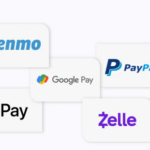About Ribbon Finance
Ribbon Finance is a new protocol that helps users access crypto structured products for DeFi. It combines options, futures, and fixed income to improve a portfolio’s risk-return profile. Here you can find the product descriptions and outgoing links to the different communication channels if you want to contribute.Ribbon Finance is a new protocol that creates crypto structured products for DeFi.
Structured products are packaged financial instruments that use a combination of derivatives to achieve some specific risk-return objective, such as betting on volatility, enhancing yields or principal protection. Ribbon currently offers a high yield product on ETH which generates yield through an automated option strategy. Ribbon will continue to expand the product offerings over time, including community-generated structured products.
Ribbon Finance uses financial engineering to create structured products that deliver sustainable yield. Ribbon’s first product focuses on yield through automated options strategies. The protocol also allows developers to create arbitrary structured products through combining various DeFi derivatives.
| Platform | Total Value | Max. Participants | Website |
|---|---|---|---|
| ETH | 30,000,000 RBN | Unlimited | Click Here To Visit |
Strangle
A Ribbon Financeis an options strategy in which the investor holds a call and a put position at different strike prices. A strangle is a good strategy if you think the underlying asset will experience a large price movement in the near future, but are unsure of the direction. Strangles help liquidity providers to hedge the risk of impermanent loss as it is a long volatility strategy.
Ribbon Finance Strangle contracts are expiring contracts that help traders to construct a strangle position on-chain. It utilizes multiple on-chain protocols to find the best price for a put and a call option.
Theta Vault
Series Y is a series of products focused on generating yields with short volatility strategies. Theta Vault, which is a yield-focused strategy on ETH and WBTC. The first Theta Vault will run a covered call strategy, which earns yield on a weekly basis through writing out of the money covered calls and collecting the premiums. Read the product page for more details about how Theta Vaults work.
Ribbon Architecture
Ribbon Finance is a protocol for designing structured products on-chain. The smart contract architecture is designed to enable developers to create the financial tools of the future. The architecture has the following goals in mind:
- Rapid and secure development of new structured products
- Simple integration of new third-party protocols
- Easy onboarding of new contributors who can work on independent modules
Ribbon Factory
The Ribbon Finance Factory contract is a factory contract used to deploy new instances of instrument contracts. It is a ProxyFactory which deploys proxies of Instruments and keeps the records of all deployed instruments.
The RibbonFactory is also the Swiss Army knife of Ribbon. It also has a few key functionalities such as:
- Storing deployed instrument addresses
- Storing Adapter addresses
- Holding Chi gas token subsidies from the Ribbon team
Bug Bounty
Ribbon Finance have an ongoing bug bounty on ImmuneFi, with up to $50,000 of bounty. The contracts that are included in the bounty are ETH and WBTC Theta Vaults.
Instrument Contracts
Instrument contracts are financial contracts that have an expiry date. Using the example of a Strangle, the Instrument contract constructs a strangle position by buying a put and call position on behalf of the user. When a user makes a function call to an Instrument contract, it will make contract calls to different protocol adapters to perform protocol-specific functions. When calling protocol adapters, the instrument contract is using This means that instead of executing the function in the context of the adapter, the Instrument contract takes control of the execution.








